
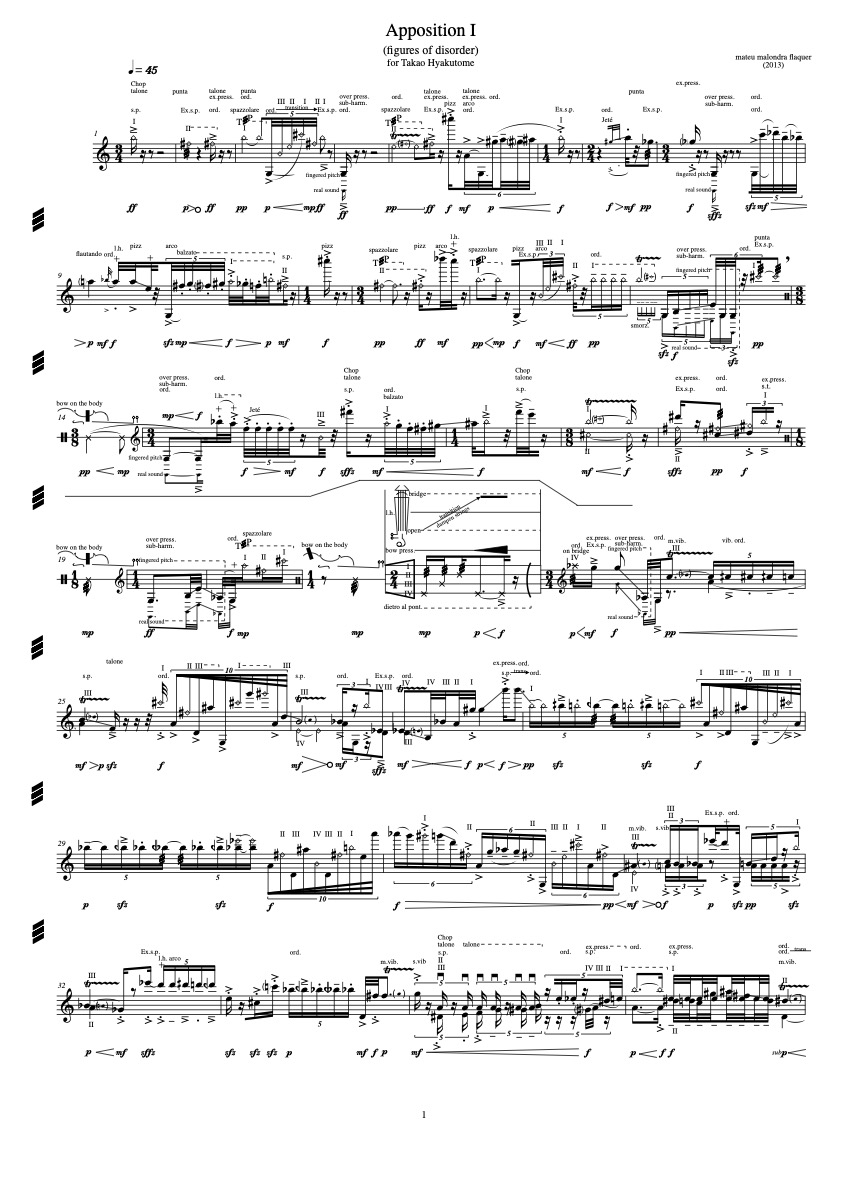
Mateu Malondra Flaquer
Apposition I,II,III & IV
Duration: 50'
Instrumentation details:
1st violin
2nd violin
3rd violin
4th violin
Apposition I,II,III & IV
Translation, reprints and more
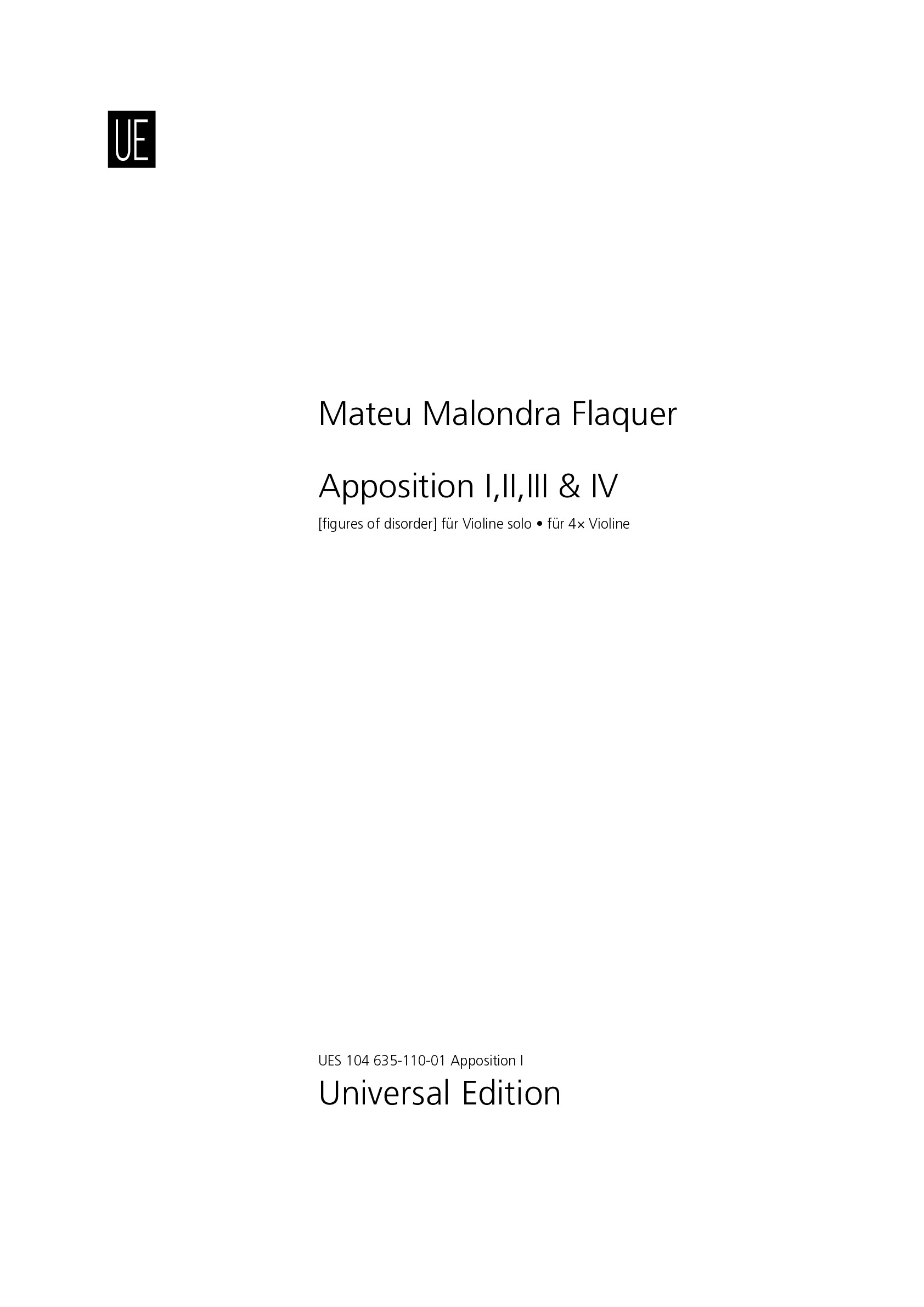
Mateu Malondra Flaquer
1. Violine (Apposition I,II,III & IV)Type: Stimme
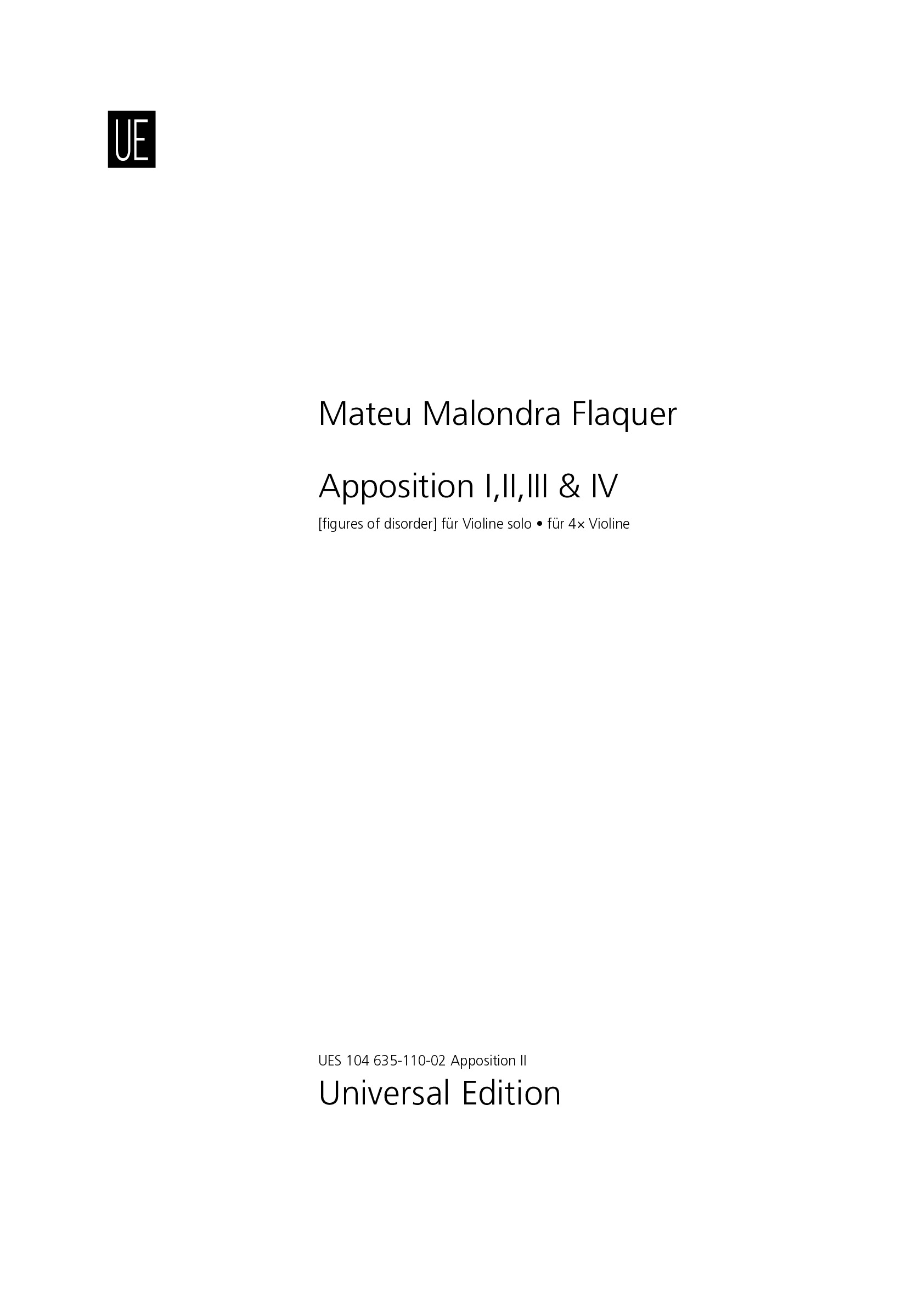
Mateu Malondra Flaquer
2. Violine (Apposition I,II,III & IV)Type: Stimme

Mateu Malondra Flaquer
3. Violine (Apposition I,II,III & IV)Type: Stimme
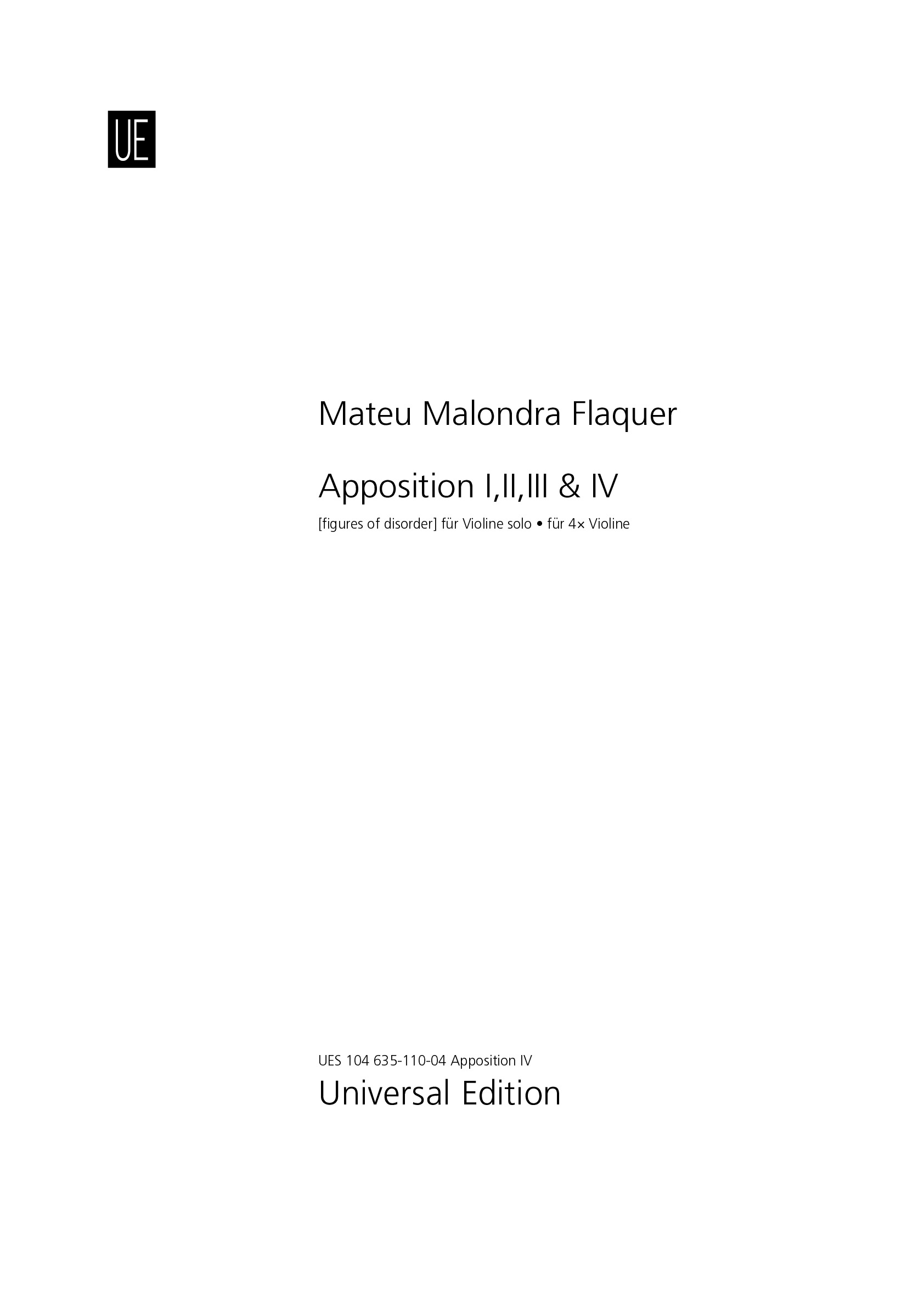
Mateu Malondra Flaquer
4. Violine (Apposition I,II,III & IV)Type: Stimme
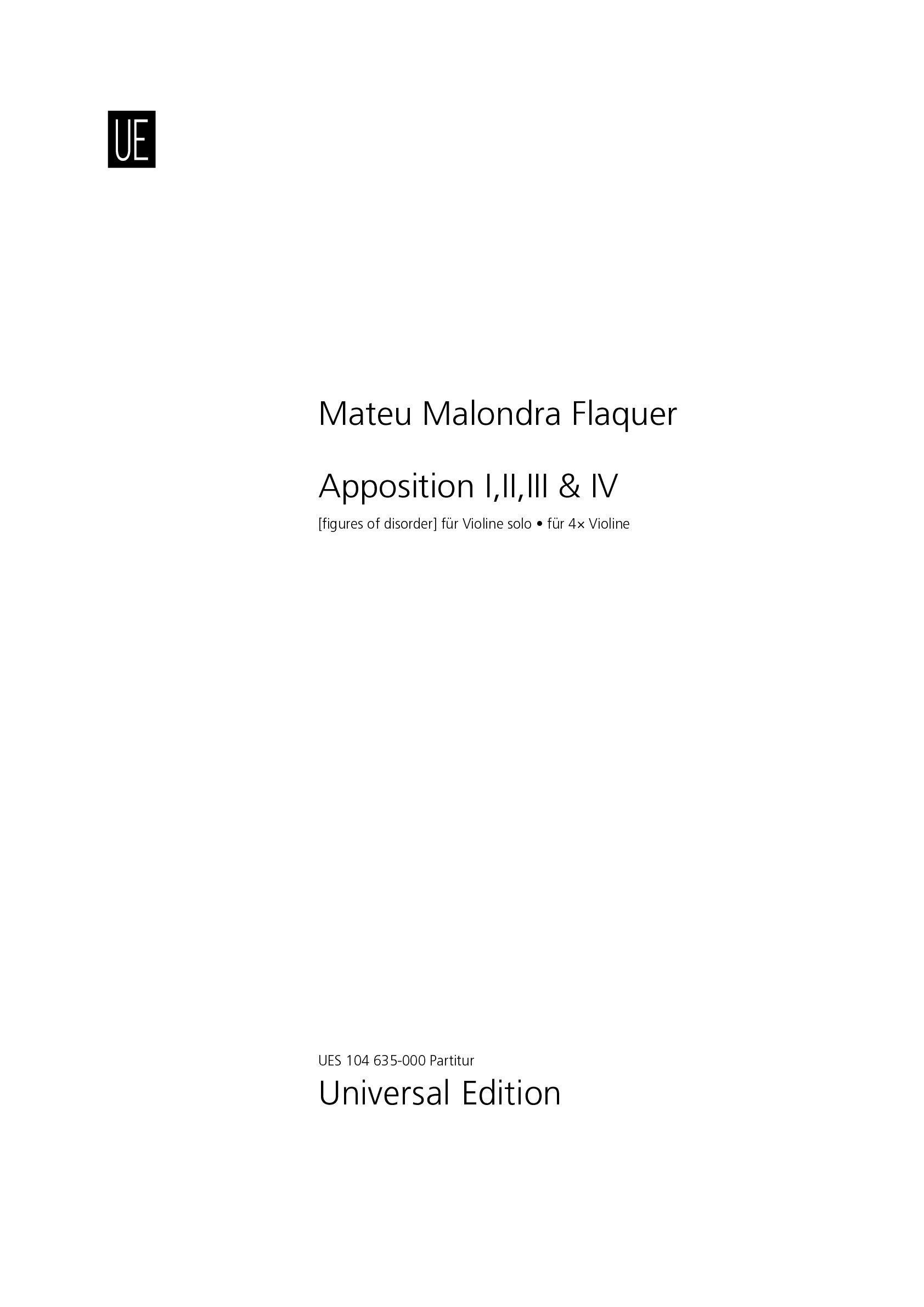
Mateu Malondra Flaquer
Apposition I,II,III & IVType: Dirigierpartitur
Sample pages
Video
Work introduction
Score options:
- Full score of the set as "score"
- Individual movements as "separate part" (1st violin=Apposition I / 2nd violin=Apposition II / 3rd violin=Apposition III / 4th violin=Apposition IV)
Apposition [figures of disorder] is a set of pieces for solo violin. The term apposition is a concept related to figures of speech. It is a grammatical construction in which two elements are juxtaposed by confronting each other. In this case, one of the elements affects the definition of the other. The linear flow of the sentence is often altered by the disruptive action of the figure. The artistic background of the work is based on the communicative dilemma and investigates the essential element of universal grammar, creating a parallelism with apposition and a recursion. In this manner, the development of recursive structures implies the relationship of clonic or similar elements but at different scales. Consequently, due to the inherent replicability of the model, recursion can directly affect the formal structure and the resulting aesthetics. In Apposition [figures of disorder], the recursive procedures are linked to the proportions of the modular-cells and how these cells are concatenated. The planning of the set focuses on the development of a recursive modular strategy avoiding total dependence of the replication of the same cell within different time scales.
What is necessary to perform this work?
Free Formal Set: Performers choice
The set Apposition [figures of disorder] develops a freedom of structural choice regarding the number and order of the sub-pieces performed. It generates open multiple relational trusses depending on the performer's structural choice.
Thus, there are various perceptual approaches when performed as isolated pieces or as a set. There are five primary structural possibilities, to be decided by the performer.
• Entire set: Ordered
• Entire set: Unordered
• Partial set: Ordered
• Partial set: Unordered
• Single sub-piece
The entire and partial set primary possibilities, can be expanded by inserting pieces of other authors in between the sub-pieces. Therefore, the relational linkages will depend, to some extent, on the interpreter's decision.
